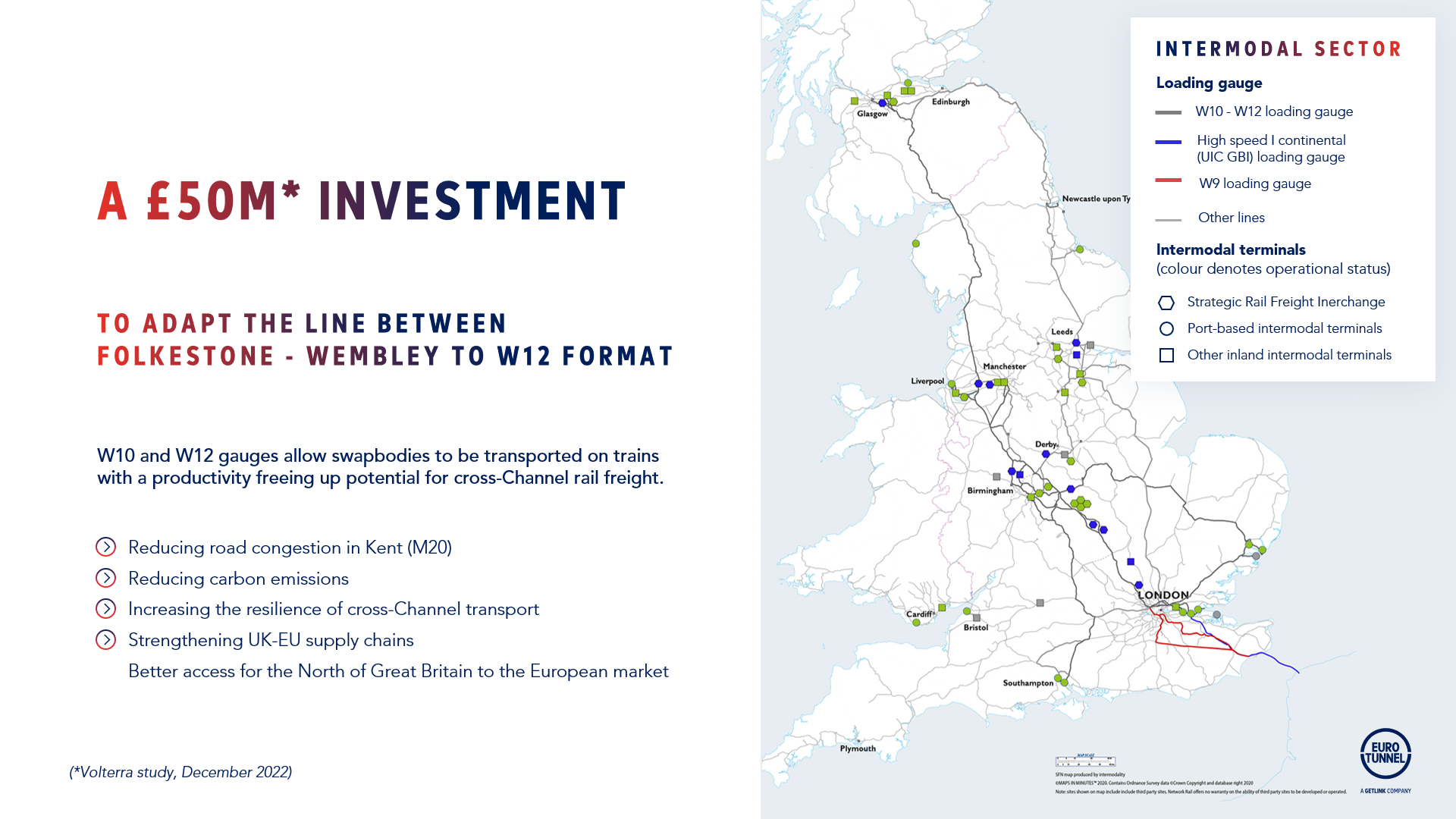Developing cross-Channel rail freight: doubling the modal share of rail freight
In a call to action, Eurotunnel and Getlink urge British rail authorities to redirect some of the HS2 investment to the development of the W12 intermodal gauge between the Fixed Link and the North of England to unlock the growth of cross-Channel rail freight.
An investment of €50 million
According to the Volterra study commissioned by Eurotunnel in December 2022, an investment of €50 million is needed in the UK to adapt loading gauge to the W12 intermodal standard between the Channel Tunnel Fixed Link and the North of London.

At a time when the HS2 project has just been cancelled, Eurotunnel and Getlink are calling for part of the HS2 investment to be transferred to adapting these loading gauges.
Although rail freight emits nine times less CO2 per tonne/kilometre than road transport, the modal shift that governments and the European Union are calling for has not yet taken place. Today, only an average of 4 freight trains pass through the Channel Tunnel every day. This is well below the Tunnel’s capacity.
The volume of goods transported in this way is barely 10% of the planned volume (1Mt vs 10Mt). The main reason for this is technical: the loading gauge on the Kent line between Folkestone and Wembley in the UK is incompatible with the size of international multi-modal containers.
By opening up the north of England, adapting freight gauge would contribute to the levelling up of economic development in the Midlands and the North of England, as well as decarbonising transport.



